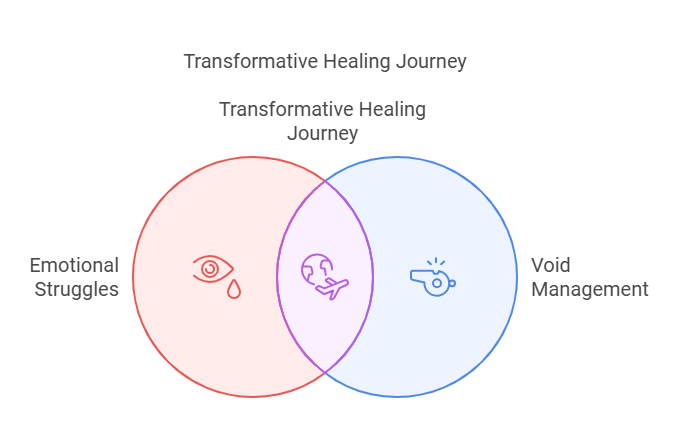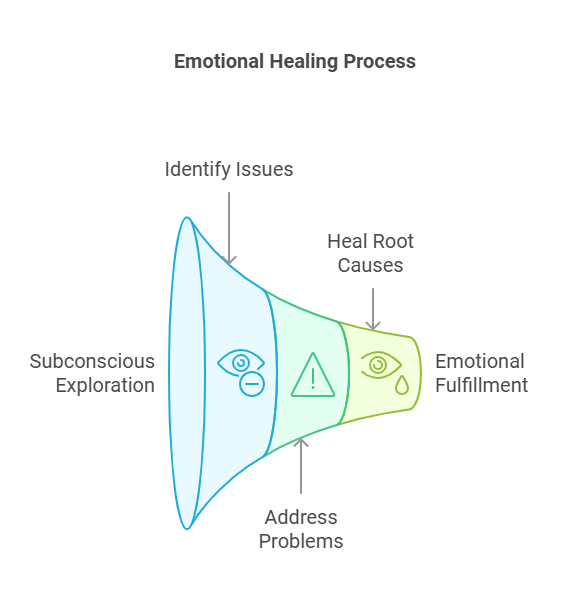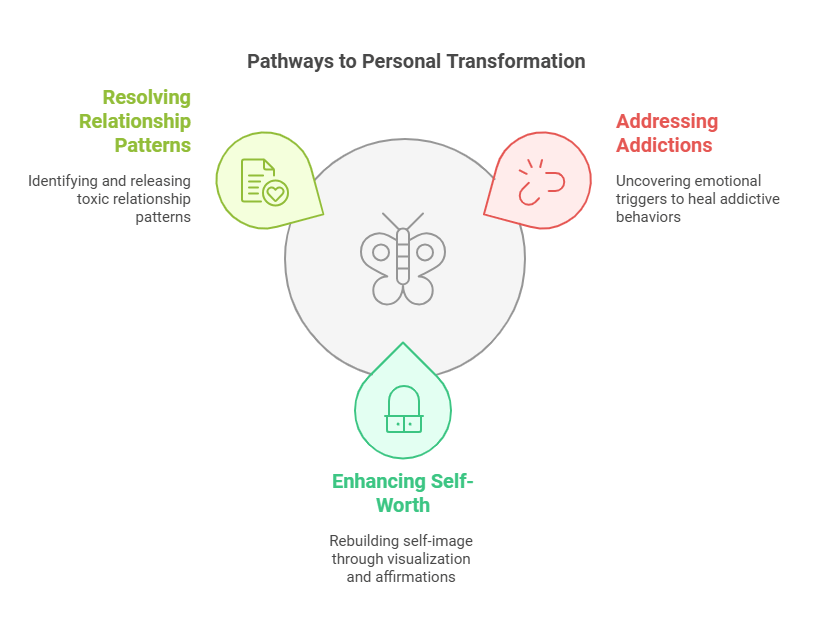Imagine an endless cycle of trying to fill a void that refuses to stay full – a frustrating, exhausting experience that many of your clients might face. This persistent emptiness, symbolized by a leaky bottle, lies at the heart of unresolved emotional struggles.
Void Management is more than a therapeutic tool; it is a transformative journey into the subconscious, aimed at healing the emptiness at its source. In this article, we delve deeper into the intricacies of Void Management, exploring its profound impact and advanced applications in therapy.

Here’s our detailed YouTube video on Void Management:
Understanding the Void
1. The Nature of the Void
- Emotional Emptiness: The void is not just a feeling; it is a pervasive state of being that disrupts one’s mental and emotional balance.
- Leakage of Fulfillment: Efforts to fill the void with distractions—work, relationships, or material possessions—often fail because they don’t address the underlying cause.
2. Common Signs of a Void
- Persistent feelings of dissatisfaction or restlessness.
- Over-reliance on external validation or unhealthy coping mechanisms.
- A sense of purposelessness despite external achievements.
3. The Root Causes
- Unresolved Trauma: Past experiences that have not been processed fully.
- Limiting Beliefs: Deep-seated perceptions about self-worth or life’s meaning.
- Subconscious Patterns: Behaviors and thoughts rooted in the subconscious mind.
Advanced Void Management Process
This process involves a systematic and deeply intuitive exploration of the subconscious to identify, address, and heal the root causes of emotional voids. Below, we outline each step in detail to give you a clear understanding of how this transformative technique works.

1. Preparing the Client
- Building Rapport: Establish trust to create a safe space for introspection.
- Assessing Readiness: Ensure the client is mentally prepared for deep subconscious work.
- Setting Intentions: Clarify goals to align the therapeutic process with the client’s needs.
2. Inducing a Hypnotic State
- Use progressive relaxation techniques or guided imagery to help the client achieve a deep state of focus and relaxation.
- Emphasize a sense of safety and control, as this state opens the door to subconscious exploration.
3. Visualizing the Corridor
- Symbolism: The corridor represents the journey into the subconscious.
- The Two Doors: These doors symbolize conscious and subconscious realms. Guide the client to choose the first door intuitively.
4. Exploring the First Door: The Room
- Current State Reflection: The room’s condition—messy, empty, or disorganized—reflects the client’s current mental and emotional state.
- Encourage Observation: Prompt the client to describe the room’s details, fostering awareness of their thoughts and feelings.
5. Descending to the Basement
- The Hidden Layers: The basement symbolizes deeper, often suppressed issues.
- Locating Unwanted Objects: Guide the client to find objects that feel out of place. These represent distractions, unresolved emotions, or limiting beliefs.
6. Removing and Releasing Objects
- Placing in a Box: Ask the client to gently place the objects in a box, symbolizing readiness to let go.
- The Garden Transition: Lead the client through the second door into a garden, representing growth and renewal.
7. Symbolic Release in the Garden
- Interpreting Objects: Help the client connect the objects to real-life issues or patterns.
- Release Exercise: Guide them to release the box into the sky, using a deep breathing exercise to let go of associated emotions.
8. Receiving Empowering Insights
- Prompt the client to ask for a symbolic gift from the universe. This gift represents qualities or insights needed to fill the void meaningfully.
9. Revisiting and Cleansing
- Reassessing the Basement: Ensure no unresolved objects remain.
- Making Adjustments: Help the client tidy the room and basement to reflect a more harmonious mental state.
10. Anchoring with Future Pacing
- Visualizing Change: Guide the client to imagine a fulfilling future influenced by their newfound clarity and empowerment.
- Strengthening Impact: Use positive affirmations to reinforce the transformation.
Practical Applications of Void Management

1. Addressing Addictions
Void Management helps uncover and heal the emotional triggers underlying addictive behaviors, offering sustainable recovery. For example, a client struggling with alcohol dependency might discover that their addiction stems from unresolved feelings of inadequacy rooted in past experiences.
By addressing these deep-seated emotions through Void Management, they can replace destructive coping mechanisms with healthier, more fulfilling alternatives.
2. Enhancing Self-Worth
By addressing subconscious beliefs and unresolved emotions, clients can rebuild a healthier self-image. Techniques such as guided visualization, affirmations, and releasing symbolic objects help clients uncover their intrinsic value and replace self-limiting beliefs with empowering perspectives.
These tools enable a profound transformation in how clients perceive themselves and their worth.
3. Resolving Relationship Patterns
Identify and release subconscious patterns that lead to unfulfilling or toxic relationships, paving the way for healthier connections.
Why Choose Void Management?
1. Comprehensive Healing
- Goes beyond surface-level coping mechanisms to address root causes.
- Facilitates emotional, mental, and spiritual growth.
2. Personalized and Holistic
- Tailored to each client’s unique experiences and needs.
- Combines cognitive, behavioral, and subconscious interventions.
3. Sustainable Transformation
- Empowers clients with tools to maintain emotional balance and fulfillment.
- Reduces reliance on external distractions or temporary fixes.
Taking Your Practice to the Next Level
Void Management is an advanced technique taught in our Cognitive Hypnotic Psychotherapy Diploma program. This diploma integrates tools like hypnosis, NLP, mindfulness, and more to offer a truly holistic approach to therapy.
This program not only deepens your therapeutic skills but also equips you to foster lasting transformations, reduce client relapse rates, and elevate your professional growth.

